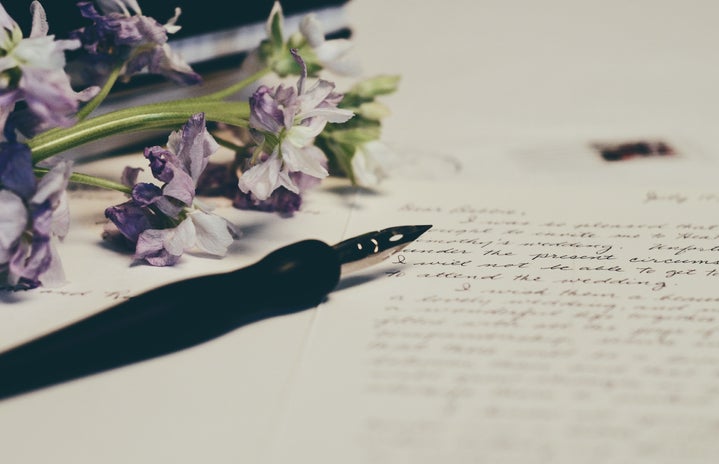Edited by: Radhika Gupta
“When, however, one reads of a witch being ducked, of a woman possessed by devils, of a wise woman selling herbs, or even of a very remarkable man who had a mother, then I think we are on the track of a lost novelist, a suppressed poet, of some mute and inglorious Jane Austen…” –Virginia Woof, A Room of One’s Own
When I am alone and out of inspiration, when the cold lonely wind makes meaningless sounds in the windows of my mind, I press my ears to the blank page, to the empty spaces between words, and let myself fall down the hole of time to hear the echoes of voices that were silenced, poems that were written down in the dark corners of houses, and stories that were narrated against all odds.
I see Jane Austen, unable to find a private space to write, and still, driven by passion, snatching time to write in the general sitting room, writing her novel one page at a time, and then quickly hiding her work whenever someone enters. I see Jo March writing in the attic in the dead of the night, and leaving her work intermittently to attend to her sick sister. I see the Bronte sisters, plagued by grief and financial insecurity, reading every book they could lay their hands on and finding solace in inventing imaginary stories and tales. And then I see Greta Gerwig, succeeding in creating a space for herself in a male-dominated industry. All these women did not allow their voices to be silenced, and created art even in the face of ruthless criticism. They did not allow the constraints imposed by society to shackle their creative freedom and left their mark on the pages of history.
I fall further down that hole. The darkness is deeper here, and the silence more stifling, more dense– a kind of dense, heavy silence that settles in the dark depths of your bones.
I see a little girl surreptitiously coming to stand outside the room where her brother is being taught classical Greek poetry by his tutor to catch a verse or two of those words that make her body turn cold, that make the fiery colors of nature outside her even more vivid and hopelessly beautiful. I see her stealing bits of paper from her brother’s desk and running out in the open fields to try writing verses like those Greek ones, and then burying her words in the earth. Her words never see the light of day, and are lost among the echoing skeletons of birdsong.
I now see shadowy silhouettes of women – women whose names have been erased from history, women whose voices were never heard, women who had poetry flowing inside of them, but could never express it due to the intersectionalities of race, class, caste, and gender. Amidst the shadows of their attempts, a few dared to etch words and birth art, only to find their voices entombed beneath myriad strata of oppression, their creations left languishing in the silent sanctuaries of the unpublished.
A faint beam of light cracks through the darkness. I now see a woman carefully writing out recipes in an old cookbook, illustrating it with watercolor made of the flowers she grows in her garden. Next, I see a woman creating ornate patterns of embroidery on handkerchiefs. And finally, I see a woman sitting by her children’s bed, telling them bedtime stories, transporting them to a world where the blue skies of imagination open their arms wide. These women too were artists, but were never recognised as artists due to society’s one-dimensional conception of art that views art as a solitary masterpiece conceived by a lone genius, confined to the pages of a book or to the hallowed halls of a museum. There are so many unwritten words, unpublished stories around us that have been passed down through generations, and that continue to shape our collective cultural output today.
Virginia Woolf wrote in A Room of One’s Own: For masterpieces are not single and solitary births; they are the outcome of many years of thinking in common, of thinking by the body of the people, so that the experience of the mass is behind the single voice. All these women who found beauty in the cracks of their existence have left behind them a creative legacy, whether recognized or unrecognized. It is their suppressed voices that I hear echoing in my work, pushing me to defy the constraints imposed by society and create art that captures the rawness of my being.


